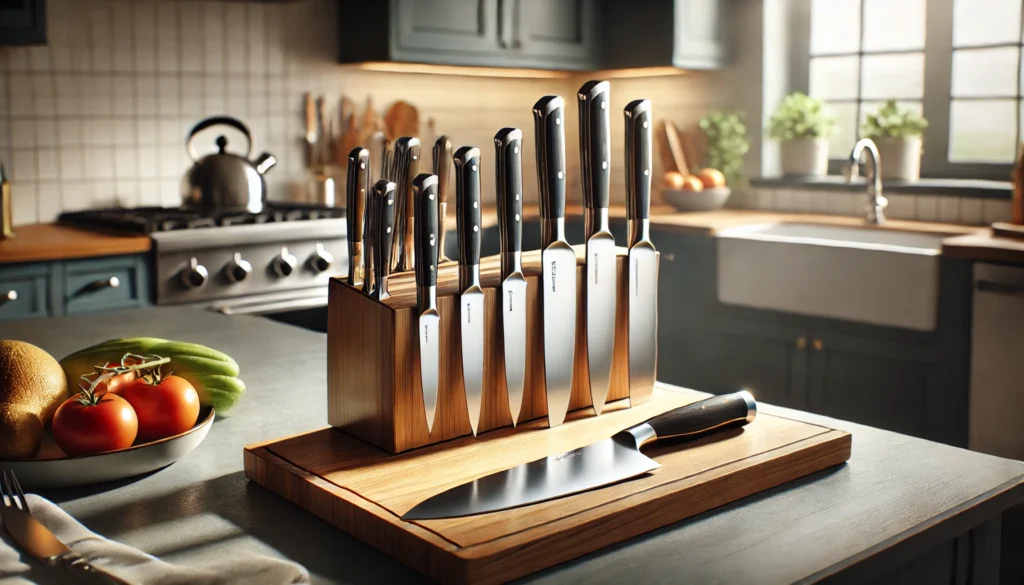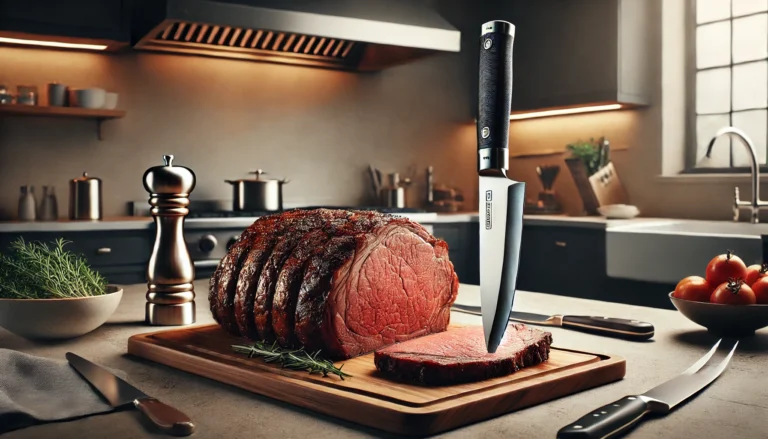
Every home cook knows that a good knife set is a kitchen essential. But how long do these indispensable tools last? Whether you’re a culinary enthusiast or a gadget lover, understanding the lifespan of your knife set can help you make informed choices and keep your kitchen running smoothly. In this blog post, we’ll explore everything you need to know about the longevity of knife sets, from the factors that affect their lifespan to tips on maintaining them for years to come.
How Long Do Knife Sets Last? (Short Answer)
The lifespan of a knife set varies based on usage and care. On average, a good-quality knife set can last five to ten years. Regular sharpening and proper storage can extend this life. Ensuring they are cleaned and dried after each use also helps. How often you cook and maintain your knives will determine their longevity.
Understanding Knife Set Lifespan
When you invest in a knife set, you want it to serve you well for as long as possible. The average lifespan of a knife set can vary greatly depending on several factors. High-quality knives can last anywhere from 5 to 20 years or more, while cheaper sets may only last a few years.
Material Matters
The material of your knives plays a significant role in their durability. Stainless steel knives are resistant to rust and corrosion, making them popular. However, professional chefs often prefer high-carbon steel knives, though more prone to rust, for their sharpness and edge retention.
Usage Frequency
How often you use your knife set will also impact its lifespan. A set used daily will naturally wear out faster than one used occasionally. Frequent use requires more regular maintenance to keep the knives in top condition.
Maintenance and Care
Proper maintenance is crucial for extending the life of your knives. Regular sharpening, adequate cleaning, and safe storage all contribute to the longevity of your knife set. Neglecting these aspects can significantly reduce their lifespan.
Signs Your Knives Need Replacing
Even the best-maintained knives will eventually show signs of wear and tear. It’s essential to recognize these signs early to avoid potential kitchen mishaps.
Dull Blades
One of the most obvious signs that your knives need replacing is a dull blade. While sharpening can restore some of the blade’s edge, there comes a point where the knife can no longer hold a sharp edge.
Rust and Corrosion
Rust and corrosion are telltale signs that your knives are past their prime. Even stainless steel knives can develop rust spots if not cared for properly.
Handle Damage
A damaged handle indicates that it’s time to replace your knife. Cracks, splits, or loosening handles can make the knife unsafe.
Tips for Extending the Life of Your Knife Set
While knives will inevitably wear out over time, there are steps you can take to maximize their lifespan.
Regular Sharpening
Keeping your knives sharp is essential for both performance and safety.
Use an eco-friendly honing rod regularly to maintain the edge, and invest in a durable, high-quality sharpener for more thorough sharpening.
Proper Cleaning
Always hand wash your knives with warm, soapy water and dry them immediately. Avoid putting them in the dishwasher, as the high heat and harsh detergents can damage the blade and the handle.
Safe Storage
Store your knives properly to prevent damage. Knife blocks, magnetic strips, and protective sheaths can all help protect your blades from nicks and scratches.
Choosing the Right Knife Set
When purchasing a new knife set, it’s essential to choose wisely to ensure longevity and performance.
Quality Over Quantity
Invest in a high-quality knife set rather than opting for a more extensive set of lower-quality knives. A few well-made knives are better than a dozen mediocre ones.
Consider Your Cooking Style
Think about the types of meals you prepare most often. If you do a lot of chopping and dicing, a chef’s and paring knives should be your top priorities.
Ergonomics and Comfort
Choose knives that feel comfortable in your hand. Ergonomically designed handles can reduce strain and simplify the knives for extended periods.
The Role of Professional Sharpening
While home sharpeners are convenient, professional sharpening services can restore your knives to like-new condition.
Finding a Professional
Look for reputable sharpening services in your area. Many kitchen stores and specialty shops offer knife sharpening.
How Often to Sharpen
Depending on usage, professional sharpening may be needed once or twice a year. Regular honing can extend the time between professional sharpenings.
Environmental Impact and Sustainability
Consider the environmental impact of your knife set. Sustainable materials and practices can make a difference.
Eco-Friendly Materials
Some knife manufacturers prioritize sustainability by using eco-friendly materials and processes. Look for brands that are committed to reducing their environmental footprint.
Recycling Old Knives
Instead of throwing away old knives, consider recycling them. Some companies offer knife recycling programs, and local metal recycling facilities may accept them.
The Importance of Knife Safety
Safety should always be a priority when using and maintaining your knives.
Proper Handling Techniques
Learn proper knife-handling techniques to prevent accidents. Always cut away from yourself and use a stable cutting surface.
Safe Storage Practices
Store knives in a way that prevents accidental cuts. Knife blocks and magnetic strips keep blades safely out of reach.
Regular Maintenance
Regular maintenance extends the life of your knives and ensures they remain safe to use. Dull knives are more dangerous than sharp ones because they require more force to cut, increasing the risk of slips.
Conclusion:
Knife sets can last a long time with proper care. The lifespan depends on the quality and how well you maintain them. High-quality knives often last over 10 years. Regular sharpening and safe storage help extend their life. Investing in a good knife set and caring for it can ensure it serves you well for many years.
FAQs
Most knife sets can last 5 to 10 years with regular use and proper maintenance. High-quality knives and good care practices can extend their life even further.
Frequent use, improper cleaning, and poor storage can all shorten the life of your knives. Using them on hard surfaces like glass or metal can dull the blades faster.
It’s recommended to hone your knives regularly and sharpen them every few months, depending on use. A professional sharpening service once or twice a year can also help maintain the blades.
While sharpening can restore some sharpness, a dull knife might never regain its original edge. Regular honing and proper maintenance can help keep knives sharp longer.
You may need to replace your knife set if the blades won’t stay sharp despite regular sharpening if there is significant rust or corrosion, or if the handles are cracked or loose.






